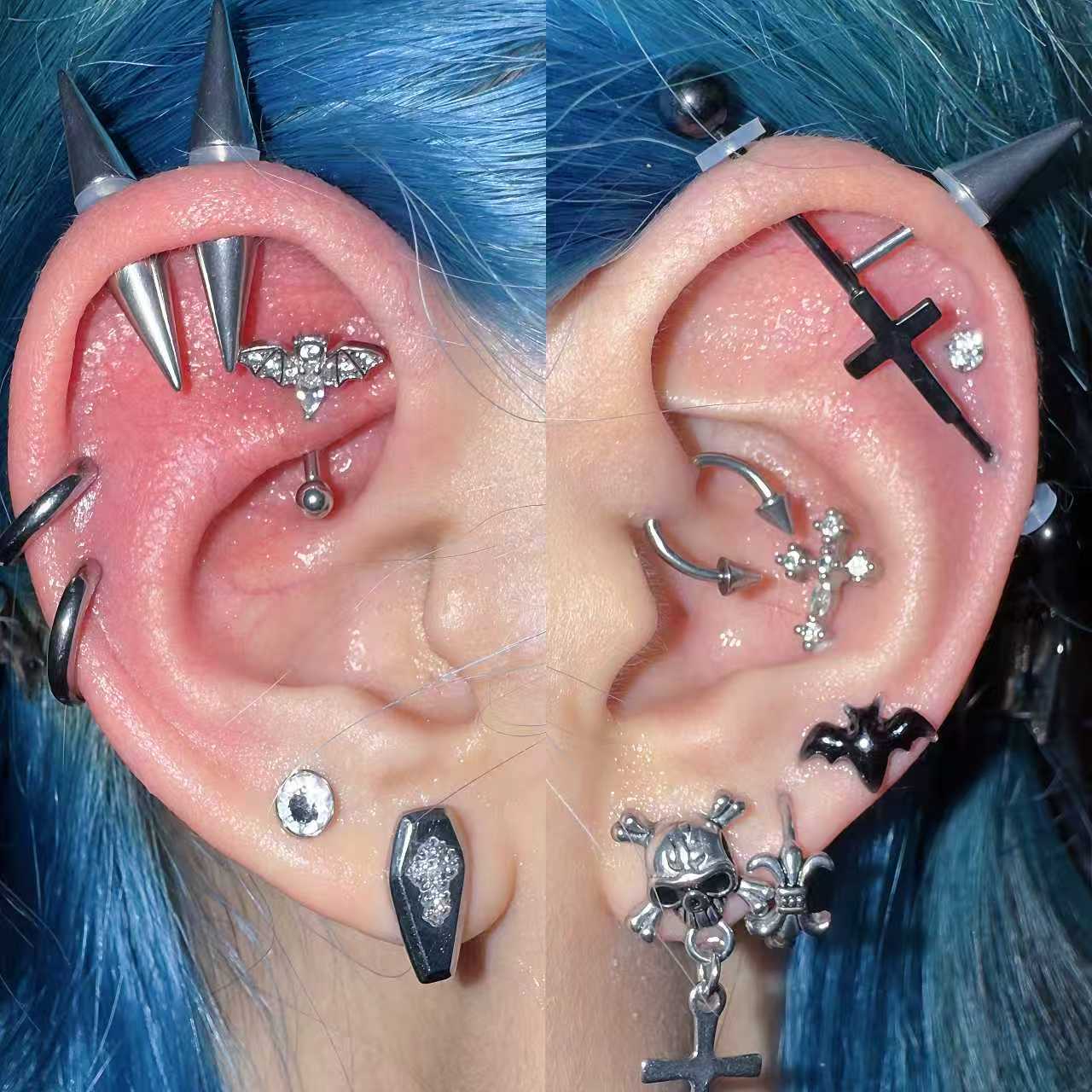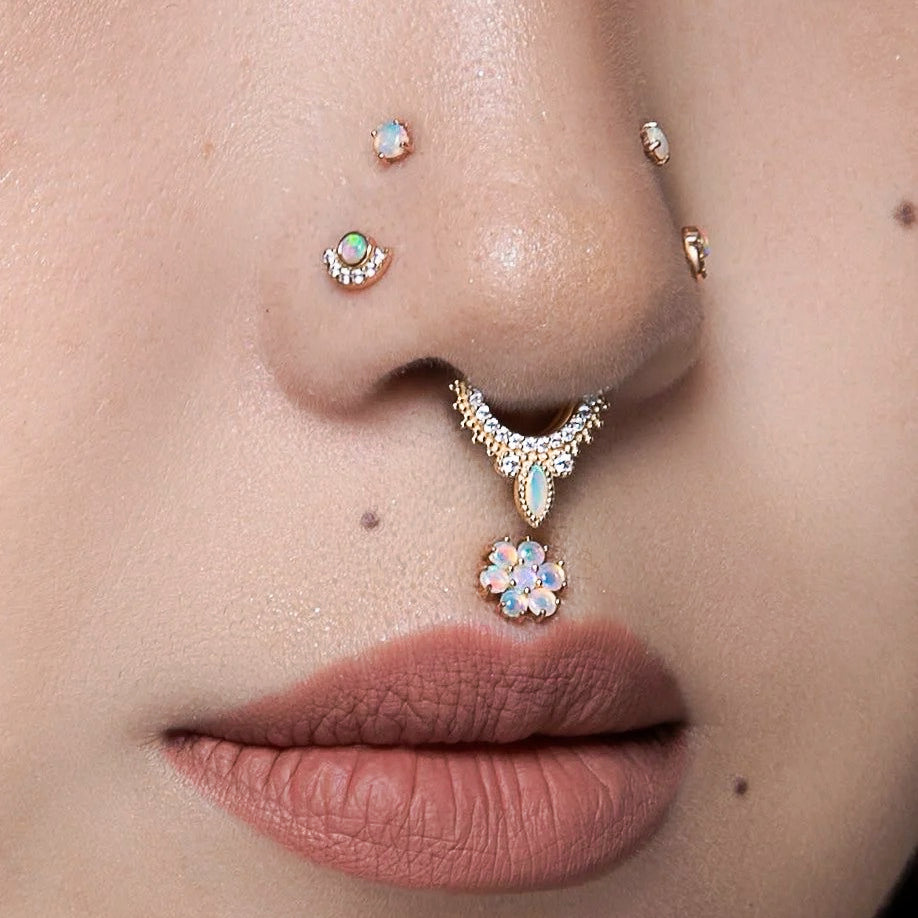
Ear Piercing 2025: Placements & Aftercare
Ear piercings have evolved far beyond the single lobe piercing, transforming into a form of personal expression often called "earscaping." With numerous placement options available, choosing the right piercings involves considering aesthetics, pain level, healing time, and aftercare requirements. This guide details various ear piercing types and essential considerations for a safe and successful experience.
Key Considerations Before Getting Pierced
-
Professional Piercer & Studio: Always choose a reputable piercing studio staffed by certified professionals. Ensure the environment is clean and that the piercer uses sterilized equipment, ideally single-use needles.
-
Jewelry Material: Initial jewelry should be made of hypoallergenic materials to minimize irritation and promote healing. Implant-grade 316L Surgical Stainless Steel is the common standard. For those with sensitivities, Implant-grade Titanium (e.g., F136/G23) or 14K/18K Gold are excellent choices.
-
Aftercare is Crucial: Proper aftercare is non-negotiable for healing and preventing infection.
-
Clean: Gently clean the piercing 1-2 times daily with a sterile saline solution.
-
Avoid: Avoid twisting, turning, or sleeping on the new piercing. Keep harsh chemicals (soap, peroxide, alcohol, bactine) away from the site.
-
Patience: Do not change jewelry prematurely. Healing times vary significantly by location.
-
Hands Off: Always wash hands before touching the piercing area.
-
Types of Ear Piercings: A Detailed Overview
The following table summarizes the key characteristics of various ear piercings, including pain level, typical healing duration, and important notes.

| Piercing Type | Placement Description | Pain Level (1-10) | Healing Time | Key Considerations & Jewelry Notes |
|---|---|---|---|---|
| Standard Lobe | Soft, fleshy lower part of the earlobe. | 1-2/10 | 6-8 weeks | Easiest and least painful to heal. Ideal for first piercing. |
| High Lobe | On the earlobe, but closer to the cartilage. | 2/10 | 6-8 weeks | Slightly more sensitive than standard lobe but still easy healing. |
| Stacked Lobe | Multiple piercings vertically aligned on the lobe. | 2/10 | 6-8 weeks (each) | Creates a modern, curated look. Heals like a standard lobe. |
| Transverse Lobe | Pierced horizontally through the lobe side-to-side. | 6/10 | 2-10 months | Barbell jewelry shows a ball on each side of the lobe. Complex piercing. |
| Helix | Upper outer rim of the ear cartilage. | 4/10 | 6-12 months | Very popular. Can have multiple in a row. Hoops or studs. |
| Forward Helix | Cartilage on the upper ear, just above the tragus. | 5/10 | 3-9 months | Requires precise placement. Can be done as a single or cluster. |
| Auricle / Mid-Helix | Outer cartilage between the helix and the lobe. | 3/10 | 3-9 months | Located opposite the tragus. Cartilage is relatively thin here. |
| Daith | Innermost cartilage fold, above the ear canal. | 5/10 | 6-9 months | Often done with a ring. Requires a skilled piercer. Anecdotal links to migraine relief. |
| Rook | Inner cartilage fold located above the daith. | 6/10 | 3-10 months | Pierces thick cartilage. A curved barbell is best for initial healing. |
| Tragus | The small, thicker flap of cartilage covering the ear canal. | 5/10 | 6-9 months | Difficult to heal if you use earbuds frequently. Irritation from phone use is common. |
| Anti-Tragus | Cartilage ridge opposite the tragus, above the lobe. | 6/10 | 9-12 months | Anatomy-dependent. A curved barbell or small ring is typical. |
| Snug | Horizontal piercing through the inner cartilage rim above anti-tragus. | 9/10 | 4-6 months | Considered one of the most painful cartilage piercings due to thickness. |
| Conch | Broad term for the central, scooped bowl of the ear cartilage. | 4/10 | 3-9 months | Versatile placement. Can be pierced for a stud or a ring (outer conch). |
| Inner Conch | Pierced through the center of the conch (thickest cartilage). | 6/10 | 3-9 months | Very close to the ear canal. Must avoid earbuds for a long period. |
| Outer Conch | Pierced on the flatter outer part of the conch area. | 6/10 | 3-9 months | Similar to inner conch but placement is often lower on the ear. |
| Industrial | Two piercings connected by a single long barbell (upper ear). | 6/10 | 9-12 months | Very difficult to heal as both piercings are connected and easily irritated. |
| Orbital | Technically two piercings connected by one ring (lobe or helix). | 4/10 | 8-10 weeks+ | Often mistakenly used to describe a ring in a conch piercing. |
| Custom/Curated | Combination of multiple piercings (e.g., 3+ lobes + helixes). | Varies | Varies | "Earscaping" project. Heal in stages for best results. |
Note: Pain levels are subjective and can vary based on individual tolerance and piercer skill. Healing times are estimates; cartilage piercings often take longer to heal completely internally.

Conclusion
Building a curated ear is an exciting journey. Start with easier piercings like lobes before moving to more complex cartilage placements. Thoroughly research your chosen piercings, invest in a professional piercer and high-quality jewelry, and commit diligently to the aftercare process. This approach will ensure your new body modifications heal beautifully and become cherished parts of your personal style.


